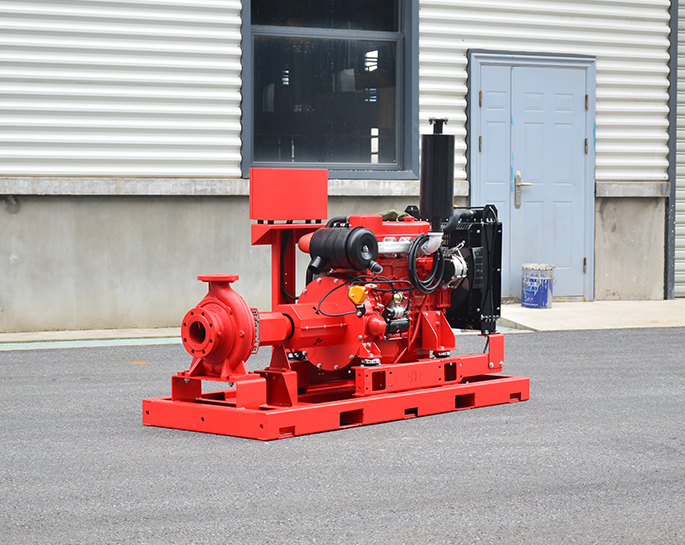How can facilities ensure compliance with insurance requirements and maintain adequate coverage for fire protection systems, including diesel fire pumps?
Mar 18, 2024
Share:
Ensuring compliance with insurance requirements and maintaining adequate coverage for fire protection systems, including diesel fire pumps, involves several key steps:
1. **Regular Inspections and Maintenance:** Facilities should conduct regular inspections and maintenance of their fire protection systems, including diesel fire pumps, as per manufacturer recommendations and relevant regulations. This helps ensure that the systems are in good working condition and can effectively mitigate fire risks.
2. **Documentation and Record-Keeping:** Maintain comprehensive documentation of inspections, maintenance activities, and any repairs or upgrades performed on the fire protection systems. This documentation should be readily accessible for review by insurance inspectors and regulatory authorities.
3. **Compliance with Standards and Codes:** Ensure that all fire protection systems, including diesel fire pumps, comply with relevant industry standards, building codes, and regulations. This may include standards set by organizations such as the National Fire Protection Association (NFPA) and regulations enforced by local authorities having jurisdiction (AHJs).
4. **Training and Certification:** Provide appropriate training to personnel responsible for operating and maintaining fire protection systems, including diesel fire pumps. Ensure that they are adequately trained and certified to perform their duties effectively and safely.
5. **Risk Assessment and Mitigation:** Conduct regular risk assessments to identify potential fire hazards and vulnerabilities in the facility. Implement measures to mitigate these risks, such as installing additional fire protection equipment or enhancing existing systems.
6. **Insurance Coverage Review:** Regularly review insurance policies to ensure that they provide adequate coverage for fire protection systems, including diesel fire pumps. Work closely with insurance providers to understand coverage requirements and make any necessary adjustments to policies to maintain compliance.
7. **Emergency Response Planning:** Develop and regularly update comprehensive emergency response plans that outline procedures for responding to fires and other emergencies. Ensure that these plans address the operation and maintenance of fire protection systems, including diesel fire pumps, during emergency situations.
8. **Communication with Insurers:** Maintain open communication with insurance providers to discuss any changes or upgrades to fire protection systems and ensure that insurers are kept informed of efforts to maintain compliance and mitigate fire risks.
By following these steps, facilities can help ensure compliance with insurance requirements and maintain adequate coverage for fire protection systems, including diesel fire pumps, thereby reducing the risk of fire-related losses and liabilities.

1. **Regular Inspections and Maintenance:** Facilities should conduct regular inspections and maintenance of their fire protection systems, including diesel fire pumps, as per manufacturer recommendations and relevant regulations. This helps ensure that the systems are in good working condition and can effectively mitigate fire risks.
2. **Documentation and Record-Keeping:** Maintain comprehensive documentation of inspections, maintenance activities, and any repairs or upgrades performed on the fire protection systems. This documentation should be readily accessible for review by insurance inspectors and regulatory authorities.
3. **Compliance with Standards and Codes:** Ensure that all fire protection systems, including diesel fire pumps, comply with relevant industry standards, building codes, and regulations. This may include standards set by organizations such as the National Fire Protection Association (NFPA) and regulations enforced by local authorities having jurisdiction (AHJs).
4. **Training and Certification:** Provide appropriate training to personnel responsible for operating and maintaining fire protection systems, including diesel fire pumps. Ensure that they are adequately trained and certified to perform their duties effectively and safely.
5. **Risk Assessment and Mitigation:** Conduct regular risk assessments to identify potential fire hazards and vulnerabilities in the facility. Implement measures to mitigate these risks, such as installing additional fire protection equipment or enhancing existing systems.
6. **Insurance Coverage Review:** Regularly review insurance policies to ensure that they provide adequate coverage for fire protection systems, including diesel fire pumps. Work closely with insurance providers to understand coverage requirements and make any necessary adjustments to policies to maintain compliance.
7. **Emergency Response Planning:** Develop and regularly update comprehensive emergency response plans that outline procedures for responding to fires and other emergencies. Ensure that these plans address the operation and maintenance of fire protection systems, including diesel fire pumps, during emergency situations.
8. **Communication with Insurers:** Maintain open communication with insurance providers to discuss any changes or upgrades to fire protection systems and ensure that insurers are kept informed of efforts to maintain compliance and mitigate fire risks.
By following these steps, facilities can help ensure compliance with insurance requirements and maintain adequate coverage for fire protection systems, including diesel fire pumps, thereby reducing the risk of fire-related losses and liabilities.


.png)
.png)

.png)


